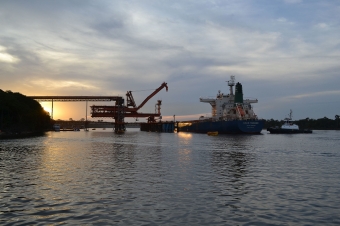Summary:
The activity focuses on the handling and observing the pattern of some international agreements on investment structure (AII). It is intended that students reflect on the agreements models suitable for regular investment flows and the interests (public and private) protected in each type of instrument. To this end, we go from the models that regulated the investments of Petrobras in Bolivia (Bolivia-Netherlands Agreement and Memorandum of Understanding Bolivia-Brazil) as opposed to the model of international agreement on US investment. This dynamics is applied after the "Petrobras Case 2 - Regulatory instruments for protection of foreign direct investment (FDI)" dynamics.
Objective:
- GENERAL GOALS: to address the standard of some international agreements on investment structure (All);
-SPECIFIC GOAL: To bring students to reflect on the particular structure of AIIs, from the Petrobras-Bolivia case. The intention is that students explore the differences between Bolivia-Netherlands agreements (regulating the Petrobras investments in Bolivia) and the memorandum of understanding between Bolivia and Brazil, country of origin of the Petrobras Group and Petrobras SA, which buys native gas from Bolivia. The US model agreement is also brought to broaden the discussion in this case, since it is considered by the literature as the most protective type of agreement the investor;
- It is intended that students reflect on the agreements models suitable for regular investment flows and the interests (public and private) protected in each type of instrument.
Dynamics:
- TEACHING METHOD: the method of Problem-Based Learning, where students seek solutions to a particular problem;
- REQUIREMENTS: there was obligatory previous reading, consisting of: full bilateral agreements between Bolivia and the Netherlands and Brazil, as well as indicated doctrine (Elkin et al.). There was also further reading of selected pages of texts related to the All;
- INTRODUCTION TO THE DYNAMICS: in the first 15 minutes there was a discussion on the document-based text (Elkin et al), about the competition for investment by developing countries and their relation to investment agreements that are unfavorable to the development of policies public but can put them in an advantageous situation in competition for foreign capital. The question raised in discussion was "What are the different types of possible investment agreements?"
- DEVELOPMENT OF THE DYNAMICS: on the following, printed exercises were given to the students for discussion in groups and answer the questions in writing. In the realization of joint practice, the students had to observe the standard framework of the following IIAs:
1) 1992 - Agreement on encouragement and reciprocal protection of Investments between the Kingdom of the Netherlands and the Republic of Bolivia;
2) 2003 - Memorandum of understanding to promote the trade and investment between the Government of the Federative Republic of Brazil and the Government of the Republic of Bolivia;
3) 2004 - Model of bilateral agreement of US investment - Model BIT - Treaty between the USA and [country] Concerning the encouragement and reciprocal protection of investment;
It should indicate the difference in the definitions of each agreement and its structures, as questions indicated (see attachments). Finally, continuing the previous year ("Petrobras Case 2"), which involved the regulation of the countries involved in the case, students demonstrated on the possible negotiation of a specific agreement between Brazil and Bolivia for investment protection, indicating the it should be proposed by the parties in order to clarify the provisions of the second document above (MoU 2003). Duration: 45 minutes;
- END OF THE DYNAMICS: in the end of class, in 30 minutes, they discussed with the professor responses to the exercise, and also discussed which domestic impacts of different types or models of international commitments in the FDI area (again, relating the discussion with the text base, Elkin et al.). In the final 10 minutes, the groups could complement their answers;
- ATTENTION IN THE CLASSROOM: some observations can be made from the experiences with the activity:
1) at other times, students of the 3rd year already had the specific case addressed from another perspective, in terms of contracts with another Professor, which allowed students to come already knowing about the structure and put them at question concepts that thought they are already consolidated;
2) the implementation of the exercise depended on the recovery of previously provided must read and context highlighting possible regulatory instruments to protect private investment, involving international agreements and national regulations;
3) early in the course of 2013, in which the exercise was applied again, there was a conversation to understand the profile of the group and outline what kind of dynamics works and what are the areas of interest of students. Alongside the role of professor in the broader education of the student, being a technical subject, it is important to align the profile of the class, which, in this case, influenced both the option to focus more on the private side that the public and the choice the base material. It was identified for example, the class of difficulty dealing with the schedule of activities outside the classroom, especially with large volume of material, which is why it was decided by goals texts (primary sources, primarily) and room for answers;
4) while applying the exercise, it is necessary to consider the limitations of foreign languages of the students, for the reading of the texts indicated is in English;
5) when working with a real case such as this, one has to be careful with materials students bring from the media, trying to deconstruct prejudices and make them see the other side of the case;
6) one must consider the regulatory framework dating back to the case, example, Bolivia, under the transitional provisions of the Constitution, should review the agreement with the Netherlands from 2014. Moreover, Bolivia is in the process of accession to Mercosur, which links to other investment regulations.
Evaluation:
- FEEDBACK: The comments to the development of the dynamics were made by the end of the class;
- GRADE EVALUATION: evaluation of all course exercises (there are about 11) made up 30% of the final grade. It was assigned a single grade to the whole group. The grading depended on the performance on exercises with the prior reading of the indicated material as mandatory for the class. The following criteria evaluates the exercise:
1) Interpretation and application of the concepts and legal rules;
2) Articulation of ideas and interests of those involved;
3) Rationale.
- There was also 10% of the final grade that was the evaluation of participation, measured in this dynamics. This evaluation item had not only counted on the active but also on the passive participation in the classroom. This means that participation was evaluated based on:
1) attention and concentration in the classroom (hear and understand the Professor and classmates);
2) read the indicated texts (especially when the Socratic Method was applied);
3) teamwork, when applicable; and
4) contribution to the reasoning proposed by the professor to the class (including the presentation of issues and correlation of ideas);
The statement of participation allowed the professor to evaluate the student's progress in learning all the skills and competencies that discipline intended to develop the student.
Observation:
Copyright from the cover page image:
Image: "Lula and workers", 2009, made available by Wikimedia Commons user 'Richard Melo da Silva, "photographer Ricardo Stuckert / PR agency for Brazil under the Creative Commons BY 3.0 license.





